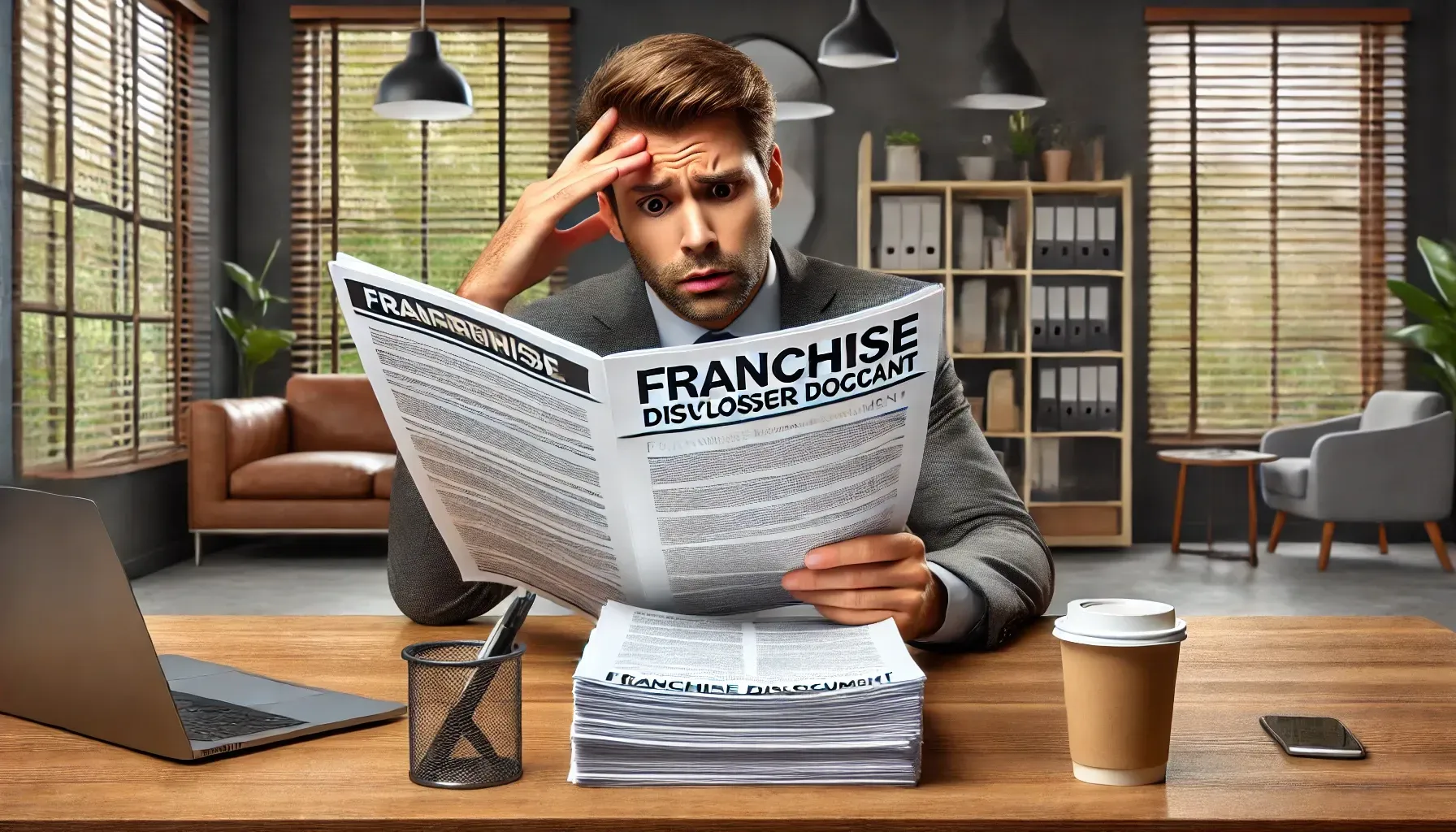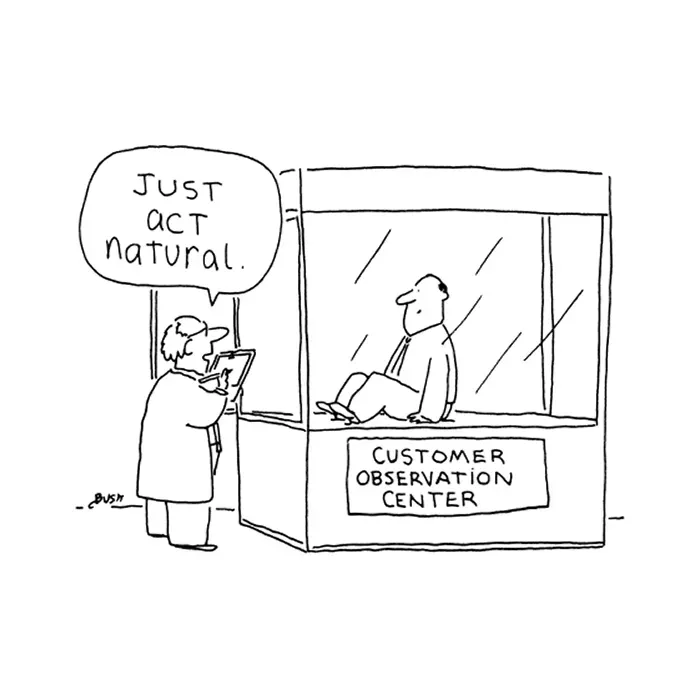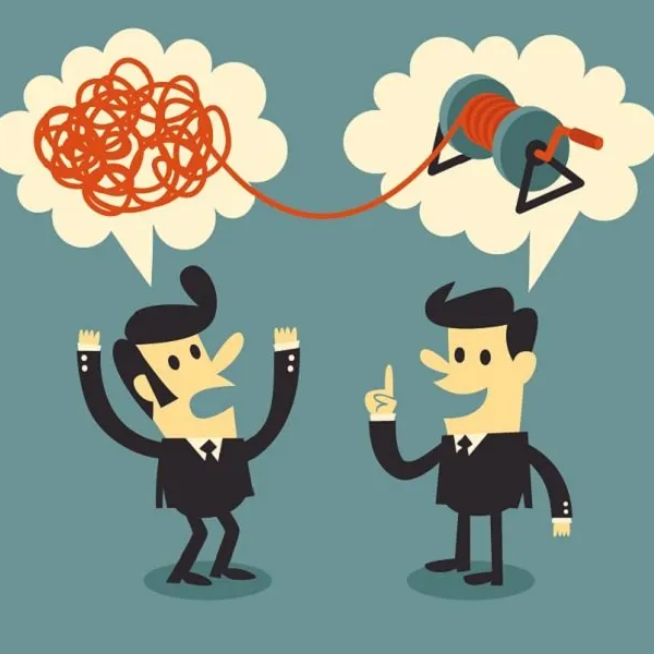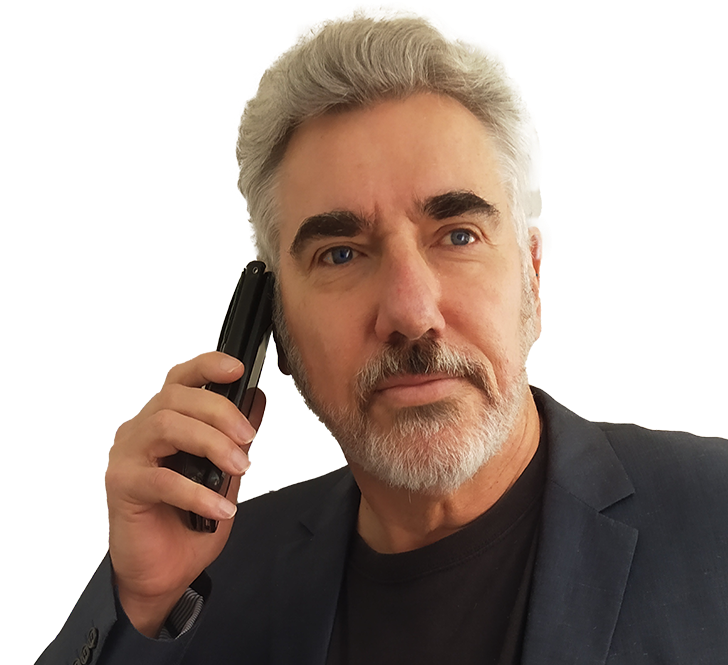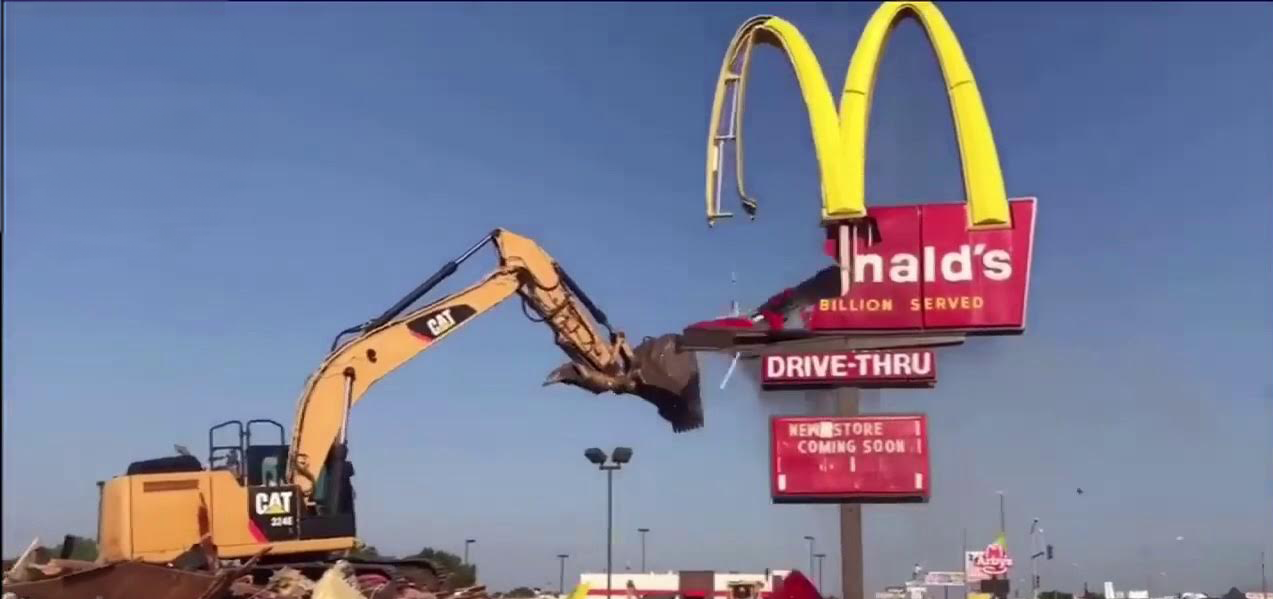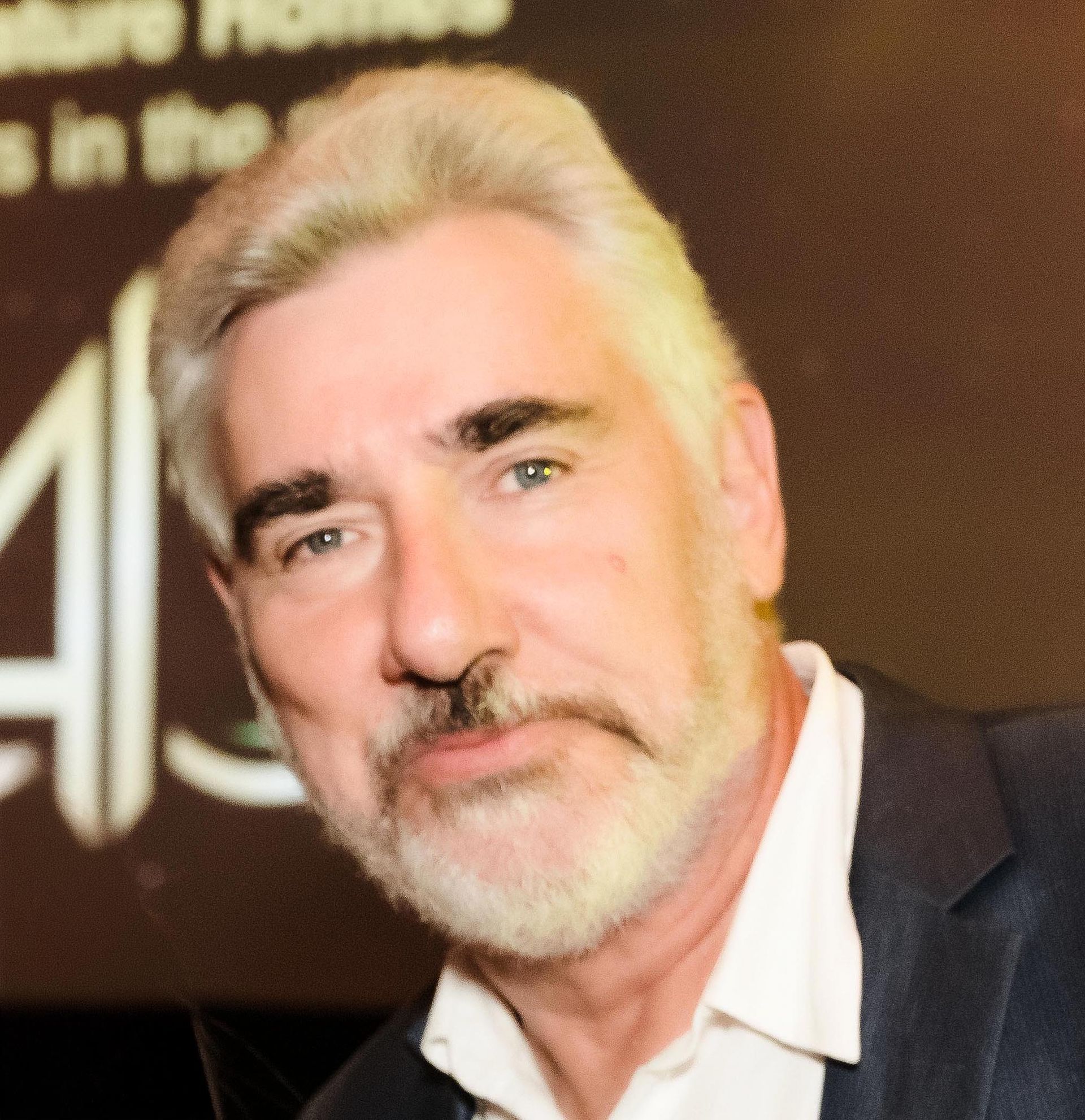I don’t know how many times clients of mine have called me up with some amazing sure-fire advertising opportunity they’ve been sold by the modern-day equivalent of a snakeoil salesperson. Usually it means spending pretty much their whole annual marketing budget – but that’s OK because ‘they swore it never fails’. Right. I pay these clients the courtesy of quickly assessing these ‘opportunities’ and then asking the salesperson: ‘Can I talk to some of the people who’ve enjoyed massive success with this system?’ That’s when they normally go quiet and I never hear from them again.
15 marketing mistakes that may be killing your business
Suffering from slowing sales? Lack of enquiry? Cashflow in the toilet? You’re not alone. These are the kinds of issues that are plaguing businesses of all stripes right now. But now’s not the time to waste time worrying about all that. Now’s the time to take action and get smarter about your marketing – before it’s too late.
The first step is to make sure you’re not making any of these marketing mistakes that, as a marketing consultant, I see businesses making all the time.
Mistake #1: Thinking there’s a silver bullet
Mistake #2: Thinking Marketing and advertising are the same thing
One of the best definitions I’ve heard of marketing is:
‘Marketing is everything you do to gain and keep a customer.’
So advertising is marketing but marketing isn’t advertising. Branding is marketing. Signage is marketing. The way you and your employees treat your customers is marketing – not only before the sale but after it. The most common mistake I see people making is failing to view their marketing strategy as an entire customer experience. Most people focus on just one or a few of these components but neglect the others. One of the most common mistakes I see people making is failing to view their marketing strategy as an entire customer experience. Most people focus on just one or a few of these components but neglect the others.
Mistake #3: Failing to plan
Mistake #4: Writing a book, not a plan
When I was completing my MBA, we were taught that business plans should be highly structured and highly detailed. But having come from the corporate world, I knew that nobody used these kinds of plans except for approvals and funding from higher-ups and lending institutions. As a result, I am a huge fan of keeping it simple – preferably to just one page. There are plenty of templates for this, but one of my favourites is the Business Model Canvas because it is built around the Customer Value Proposition – how your business creates, delivers and captures value. To me, the customer must be at the centre of your marketing plan because without customers, you don’t have a business.
Simple example of a Business Model Canvas for Google
Mistake #5: Failing to work the plan
You wouldn’t believe how many clients have paid me good money to help them write their business or marketing plan – and then forgotten about it. One client even forgot that he had already paid another consultant to write a business plan – just a few weeks before. Forgive me, but here’s another adage that’s totally relevant here:
‘Plan your work and work your plan’
One of my most successful clients co-owned a smallish home building franchise. He was also one of my favourite clients because he was like a bulldog – once we had developed a plan, he wouldn’t let it go. There’s nothing more satisfying for a consultant like me than seeing a plan successfully executed. Every week we would sit down and review progress against the plan. The franchise is now New Zealand’s largest home-grown building brand.
Mistake #6: Thinking the word ‘plan’ is a noun, not a verb
The real value of a plan is not the plan itself but the planning that goes into it and the questions you must consider during the planning process. Who is your customer? What are their needs? How can you best solve their problems? What’s working and what’s not? Planning shouldn’t happen once a year – it should happen all year long.
Mistake #7: Sticking to the plan
What? One minute I’m saying you need to work your plan, the next I’m saying you shouldn’t stick with it. Have I lost my mind? Not quite. There is an old adage that no battle plan survives contact with the enemy. Or, as Mike Tyson is famously known to have said:
‘Everybody has a game plan until they get punched in the face.’
Just because it’s in the plan doesn’t mean it’s going to work. When it doesn’t work, what’s important is how you respond. Sticking to the plan isn’t it. The three golden rules of marketing:
Test, pivot, test
Mistake #8: Not knowing your customers
Mistake #9: Not having a CVP
You’ve no doubt heard about USPs (unique selling propositions) and PODs (points of difference) but you may not have come across CVPs (customer value propositions) until you read Mistake #4 above. USPs and PODs are about standing out from your competitors – otherwise what’s the point of customers buying from you and not them? – but you’ve got to stand out in a way that’s relevant to your customers. Too many marketers forget this. That’s where your CVP (customer value proposition) comes in. In a nutshell, you need to solve the customer’s problem or meet their need in a unique way. In a way that means more to them than the way your competitors are trying to solve their problem.
Mistake #10: Not productising your services
The problem with selling services is that you can’t see and touch a service as you can a product. You don’t tangibly know what you’re getting until the service is completed. Often you don’t even know what the final price will be. This makes it harder in general to sell a service than a product. You must sell yourself – your reputation, your knowledge, your experience – as a service provider. But packaging and pricing your services like a product helps the customer understand what exactly they get for their money without second-guessing the service parameters.
The residential design and build industry is a perfect example. Their customers want a home that is unique to them. But in most cases they’re not sure about the design of their ideal home and what it will cost to build. So almost all group housing companies produce a range of standard home designs, complete with realistic-looking visuals and indicative prices, for their customers to choose from. When the customers see what they like and can afford, the companies’ designers start the process of working with them to customise the design to meet their exact needs.
Another example (and a shameless plug) is the way I have productised the process of franchising a business:
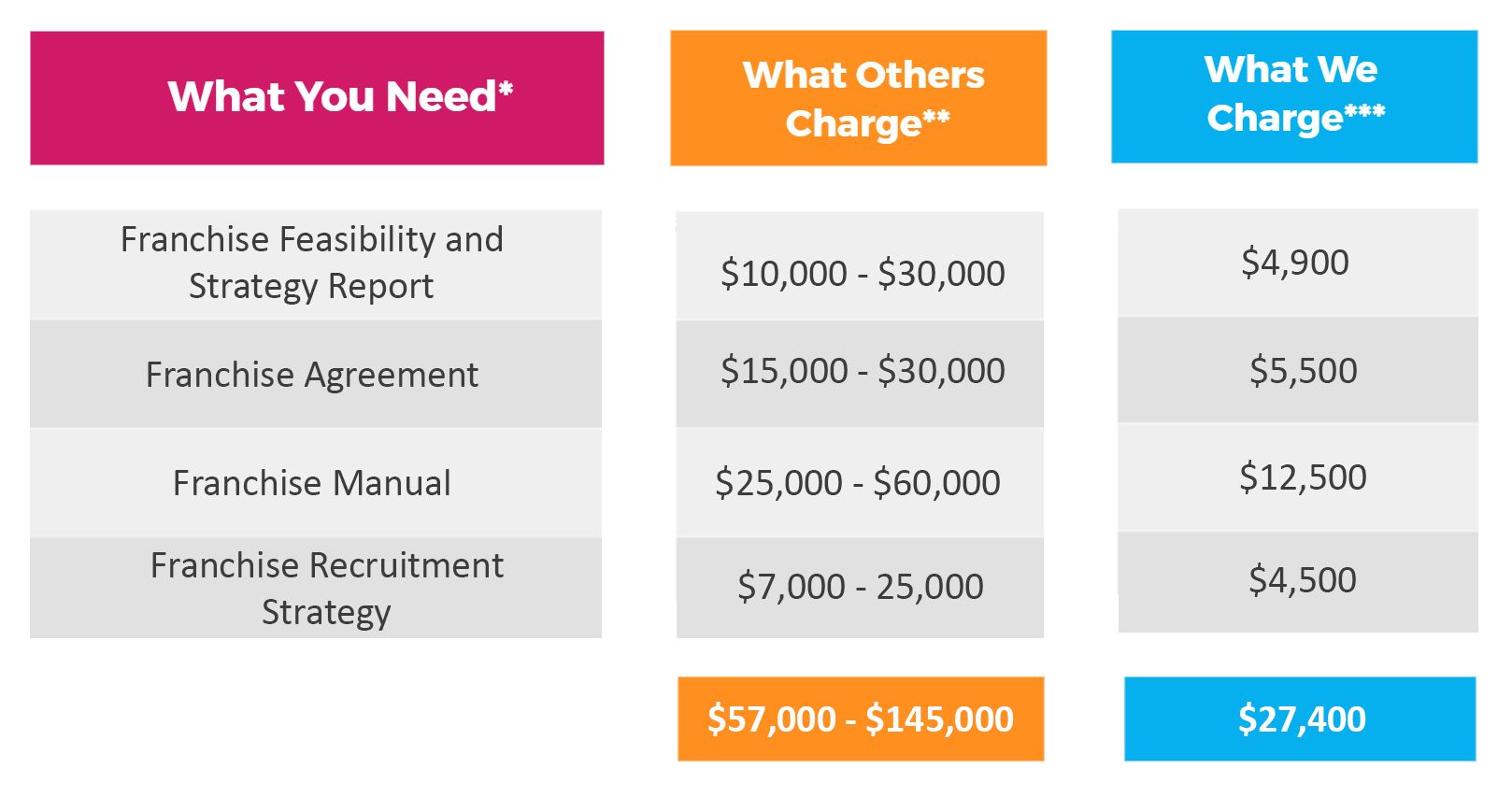
For full details of the best way to franchise your business, click here.
Mistake #11: Not having a clear call-to-action
Have you ever wanted to buy something so badly that you don’t care about its brand, benefits, quality or price? Me either. Research indicates that it takes between 5 and 9 contacts or attempts – in marketing parlance, ‘touchpoints’ – to make an average sale. The way to get a response to your marketing is to make sure you always include a CTA (call to action). Ultimately, of course, you want to sell but the most important thing is to keep prospects engaged. If a person viewing your website wants to know more about your business, product or service, they will look for CTAs such as information downloads, links to other pages on your website or your social media pages, or a free trial of your products or services.
Here is an example of a CTA that you should definitely follow up:
Mistake #12: Not tracking your results
Would you watch a sporting event without waiting to see who wins? Thought not. Yet it’s amazing how many business people spend bucketloads on marketing but don’t really track any results apart from sales. Yes, marketing all comes down to sales. But how can you know if your marketing dollars are being effectively spent if you’re not measuring where those sales are coming from and what’s working and what’s not? OK, I feel another old business maxim coming on:
‘You can’t manage what you can’t measure’
Mistake #13: Thinking that marketing is too expensive and time-consuming
I have to admit that this type of ‘growth hacking’ is more time-consuming than traditional marketing. But these days I employ a virtual team of graphic designers, SEO experts and other marketing specialists to speed things up. And I automate everything I can with smart technology and AI.
A final word: The worst thing you can do when times get tough is to cut back on your marketing. Marketing must be seen as an investment, not a cost. Of course, it is only an investment if it produces a return. But the smarter the investment, and lower the cost, the greater the potential return.
Mistake #14: Thinking you only need to use one medium
When I worked for DDB, then the second-largest advertising agency in the world, the glass lampshade over the boardroom table had a number printed on it in large letters: 1,500. This represented the number of ads that the average person was exposed to in a single day. Today, that number has grown to between 4,000 and 10,000 ads, according to research. They’re not just on your TV, computer and phone, they’re everywhere. Every brand is a form of advertising. So given that level of competition for their customers’ eyeballs, I’m always astonished when a new client tells me they only advertise on Facebook or Google. Of course, I’m not advocating that you use a scattergun or mass media approach. The media you use must be targeted to the right target market. And remember from Mistake #11 that it takes 5 – 9 ‘touchpoints’ to make a sale.
Mistake #15: Thinking you don’t need anybody else’s help with marketing
Of course, I would say that. I’m a marketing consultant. I’ve helped literally hundreds of businesses to gain and keep more customers. But if marketing isn’t your thing, your current marketing isn’t working or you just can’t seem to fit marketing into your busy day, it’s time to bring in some extra help.
Share on your Page:
Follow us:



